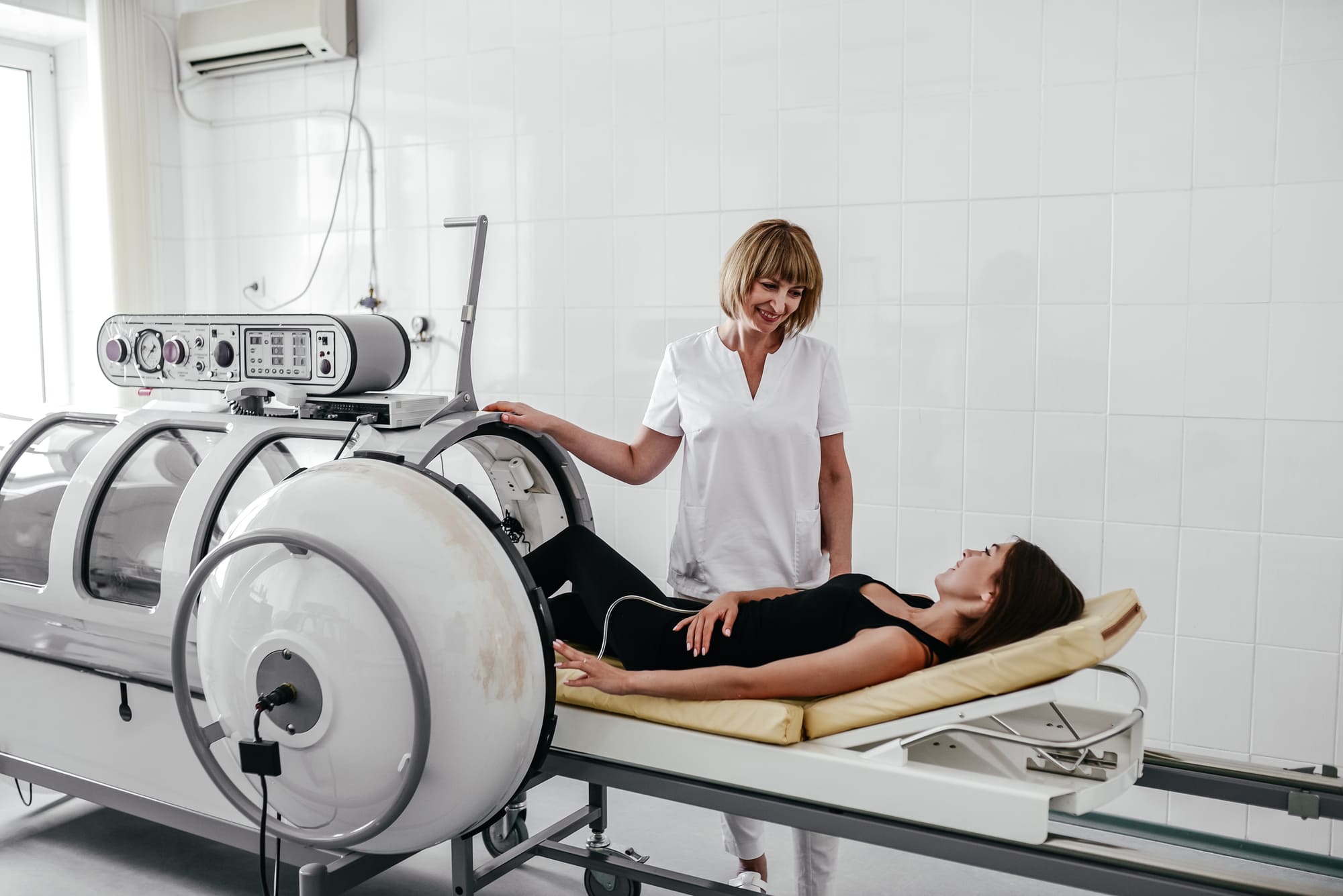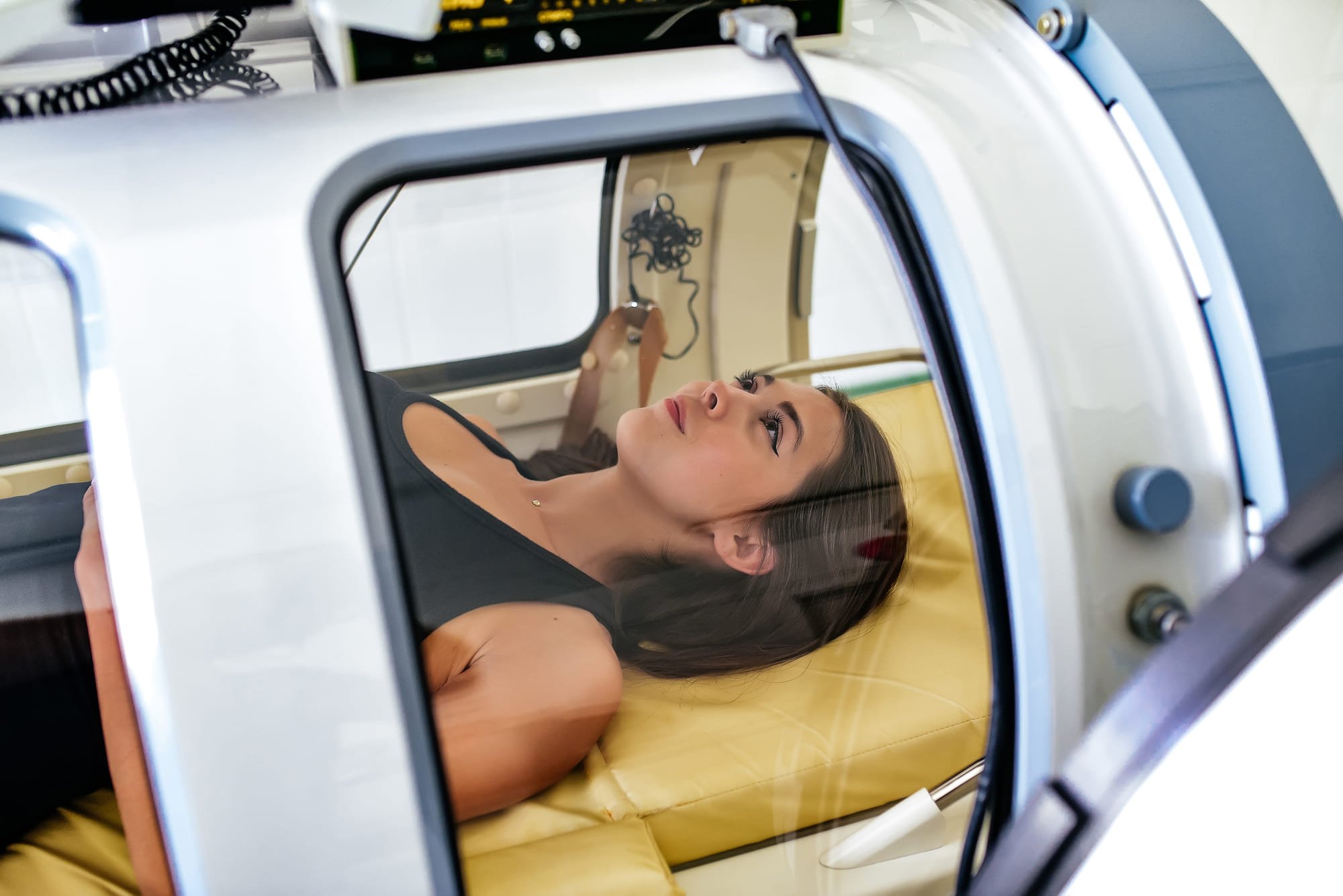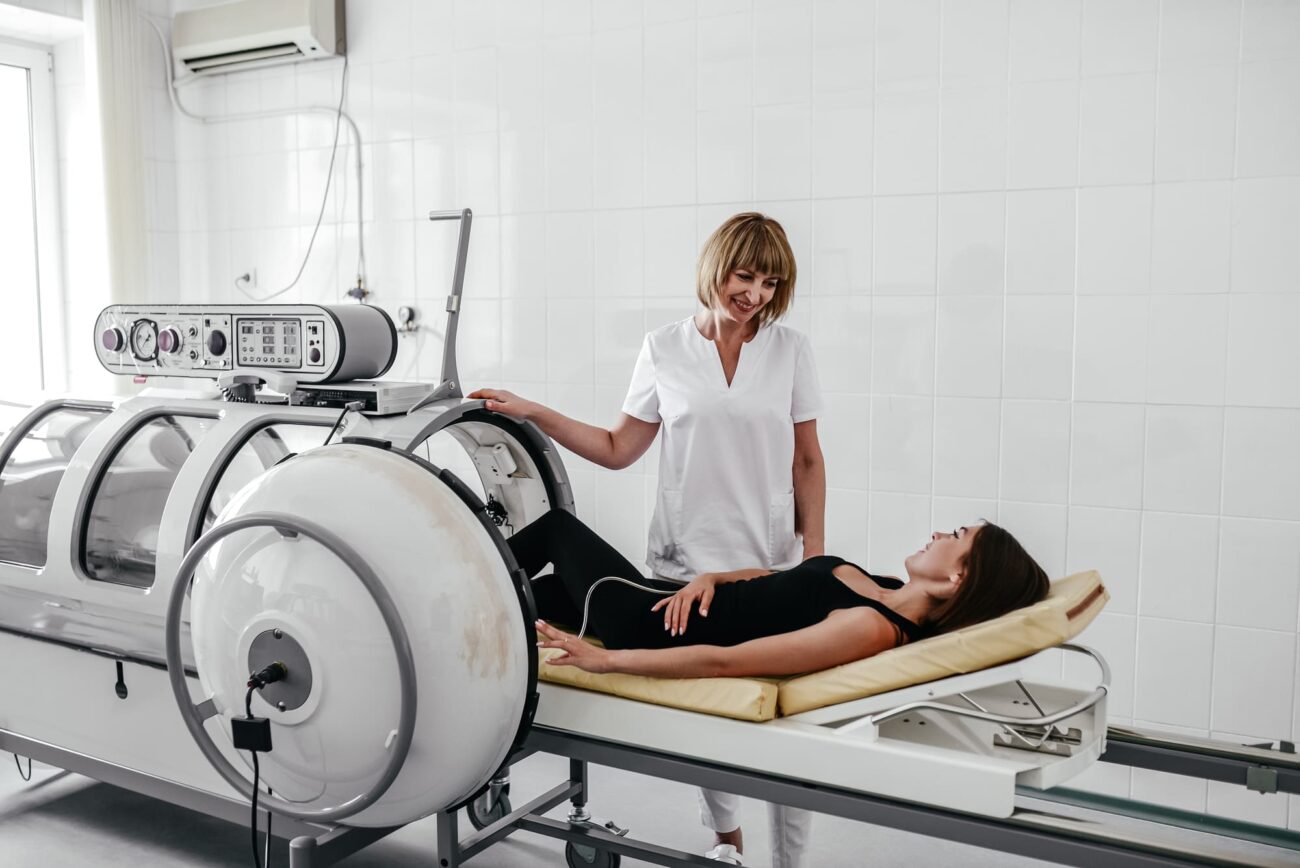
Wound healing is an essential process for the body, crucial for restoring the integrity of the skin and underlying tissues after injury. Yet, for many, the journey toward complete healing is fraught with obstacles, particularly when faced with chronic wounds or conditions that impair the body’s natural healing mechanisms.
Diabetic foot ulcers, radiation injuries, and chronic non-healing wounds pose significant challenges to patients and healthcare providers alike, often leading to prolonged discomfort, risk of infection, and, in severe cases, amputation.
The quest for innovative treatments capable of overcoming these hurdles is ongoing, and among the most promising of these advancements is Hyperbaric Oxygen Therapy (HBOT), a technique that leverages the healing power of oxygen to treat complex wounds.
Understanding Hyperbaric Oxygen Therapy (HBOT)
Hyperbaric Oxygen Therapy (HBOT) is a medical treatment that enhances the body’s natural healing processes through the inhalation of 100% oxygen in a total body chamber, where atmospheric pressure is increased to above-normal sea level and controlled. It is used for a wide variety of treatments, usually as a part of an overall medical care plan.
Under these conditions, your lungs can gather more oxygen than would be possible by breathing pure oxygen at normal air pressure. Your blood carries this oxygen throughout your body. This helps fight bacteria and stimulate the release of substances called growth factors and stem cells¹, which promote healing.
HBOT's history dates back to the 1600s², but its modern medical applications were not fully appreciated until the mid-20th century, with the treatment of decompression sickness in divers. Since then, the scope of HBOT has broadened remarkably, encompassing not only acute but also chronic conditions, driven by an increasing understanding of its physiological benefits.
During a typical HBOT session, which can last from 60 to 120 minutes, patients lie in a transparent chamber, breathing normally as the pressure and oxygen levels are carefully increased. This non-invasive procedure is generally well-tolerated, with patients often listening to music, watching TV, or simply resting.
The Role of HBOT in Wound Healing
At the cellular level, HBOT exerts its therapeutic effects through several mechanisms. By dramatically increasing the oxygen concentration in the blood, HBOT delivers oxygen to wound areas where circulation is impaired. This influx of oxygen accelerates the repair processes, stimulates angiogenesis (the formation of new blood vessels), and enhances the function of white blood cells, which fight infection.
HBOT is particularly beneficial for wounds that are slow to heal due to diabetes, radiation damage, or other underlying conditions. Diabetic foot ulcers, for example, are notorious for their poor healing rates due to compromised blood flow and reduced oxygenation; HBOT directly addresses these issues, offering a chance for such wounds to heal. Radiation injuries, which can cause long-term tissue damage, and chronic non-healing wounds also show marked improvement with HBOT, supported by a growing body of clinical research that underscores its effectiveness and mechanism of action.
Benefits of Hyperbaric Oxygen Therapy for Wound Healing
The adoption of HBOT in wound care is supported by its numerous benefits, which extend beyond accelerated wound healing.
The therapy's ability to reduce the risk of infection³ is particularly valuable, as infections can significantly complicate and prolong the healing process.
By enhancing the body's immune response and increasing collagen production, HBOT not only speeds up wound closure but also improves the quality of the healed tissue, leading to better functional and cosmetic outcomes.
Furthermore, HBOT has been shown to improve the success rates of skin grafts and flaps, a common necessity in treating severe wounds. By improving oxygenation and blood flow in the treated area, HBOT ensures that these tissues receive the necessary nutrients and oxygen to survive and integrate successfully.

Considerations and Precautions
The complications associated with Hyperbaric Oxygen Therapy (HBOT), while uncommon, are taken seriously and managed through a combination of preventive measures and treatments:
- Middle Ear Barotrauma: To prevent this, patients are taught techniques to equalize ear pressure during the compression phase of HBOT, such as yawning, swallowing, or the Valsalva maneuver. If patients continue to have difficulty, ear tubes may be recommended by healthcare providers for those undergoing multiple sessions.
- Sinus Issues: Similar preventive techniques as those for middle ear barotrauma are advised for managing sinus pressure changes. Additionally, decongestants or nasal sprays may be used before sessions to reduce the risk of sinus discomfort.
- Oxygen Toxicity: Although rare, oxygen toxicity is a potential risk during HBOT. This is mitigated by closely monitoring the duration and oxygen concentration during treatment sessions. HBOT protocols are designed to limit exposure to high oxygen levels, and breaks are incorporated into treatment schedules if extended therapy is necessary.
Patient eligibility for HBOT is determined through a comprehensive assessment that considers the individual’s overall health and specific needs, ensuring that the benefits outweigh any risks. By choosing a reputable and experienced HBOT provider, patients can ensure they receive the highest standard of care, with staff trained to prevent, recognize, and promptly address any side effects or complications.
HBOT Compared to Traditional Wound Healing Methods
Hyperbaric Oxygen Therapy (HBOT) represents a significant advancement in wound care, offering benefits not achievable through traditional wound healing methods alone. Traditional treatments typically focus on local wound care, infection control, and, when necessary, surgical intervention. While these approaches are essential, they often do not address one of the critical underlying issues in chronic wound healing: hypoxia or insufficient oxygen at the wound site.
Conventional treatments, such as dressing changes and topical medications, primarily manage the wound's external environment. HBOT, in contrast, works internally, enhancing the body's ability to heal itself through increased oxygen delivery to tissues. This fundamental difference can make HBOT more effective in treating wounds that have stalled due to poor circulation or diabetes, where oxygenation is a key issue.
Scenarios Where HBOT is Most Effective
HBOT shows its highest efficacy in scenarios involving:
- Diabetic foot ulcers, where it can significantly reduce amputation rates.
- Radiation injuries, promoting the healing of radiation-damaged tissues, which conventional methods alone cannot achieve.
- Chronic non-healing wounds, where traditional treatments have failed to induce healing.

Practical Tips for Patients Undergoing HBOT
Preparing for an HBOT Session
Before your first HBOT session, it's important to know what to expect and how to prepare:
- What to Expect: You'll be in a clear chamber, either lying down or sitting, for about 90-120 minutes. You can relax, sleep, or listen to music.
- How to Dress: Wear comfortable, loose-fitting cotton clothing. Avoid using any petroleum-based skin products beforehand.
Lifestyle and Dietary Recommendations
- Hydration: Increase water intake before starting HBOT to enhance oxygen delivery in the body.
- Diet: Eat a balanced diet rich in antioxidants to support tissue repair and regeneration.
Post-Treatment Care and Monitoring
- Follow-Up: Attend all scheduled follow-up appointments to monitor wound healing progress.
- Wound Care: Continue with prescribed wound care routines alongside HBOT treatments.
Conclusion
Hyperbaric Oxygen Therapy is revolutionizing wound healing, offering hope where traditional methods fall short. Its ability to accelerate healing, reduce infection risk, and improve patient outcomes makes it a valuable tool in comprehensive wound care strategies. Patients and healthcare providers are encouraged to consider HBOT in managing complex or chronic wounds.
Have you or someone you know experienced the healing benefits of Hyperbaric Oxygen Therapy? Share your story or questions in the comments below. If you're considering HBOT for wound healing, we encourage you to speak with a healthcare provider to discuss its suitability for your condition and explore how it can be integrated into your treatment plan.

Frequently Asked Questions
How long does an HBOT session last?
What are the costs of HBOT, and does insurance cover it?
Costs for HBOT can vary widely based on geographical location, the facility, and the specific condition being treated. While many insurance plans do cover HBOT for approved medical conditions such as diabetic foot ulcers and certain types of infections, coverage details can differ significantly between policies. It is essential for patients to consult with their insurance provider to understand their coverage and any potential out-of-pocket costs.
How many treatments are needed?
The total number of HBOT sessions required can range from a few to several dozen, depending on factors such as the severity of the wound, the patient's overall health, and how well the wound responds to the treatment. In some cases, improvements can be seen after a few sessions, but more complex or severe conditions may necessitate a longer course of treatment to achieve the best outcomes.
Is HBOT available everywhere?
While HBOT facilities are more commonly found in large medical centers and specialized wound care clinics, their availability can vary significantly depending on one's location.
Urban areas and regions with higher populations tend to have more HBOT options, whereas rural areas may have limited access. Patients interested in HBOT may need to travel to access treatment, so it's important to consider the logistics and potential travel arrangements required.

